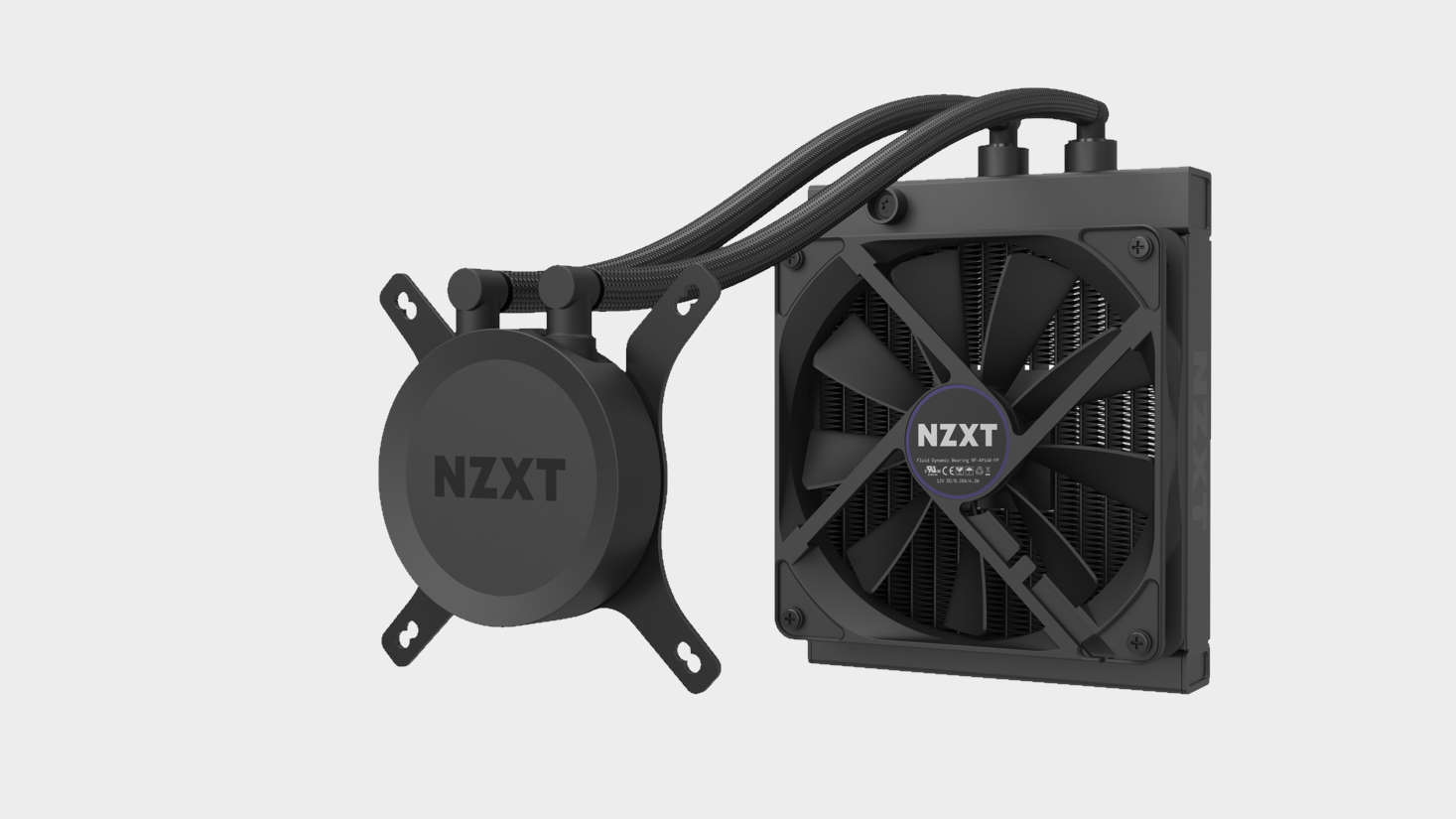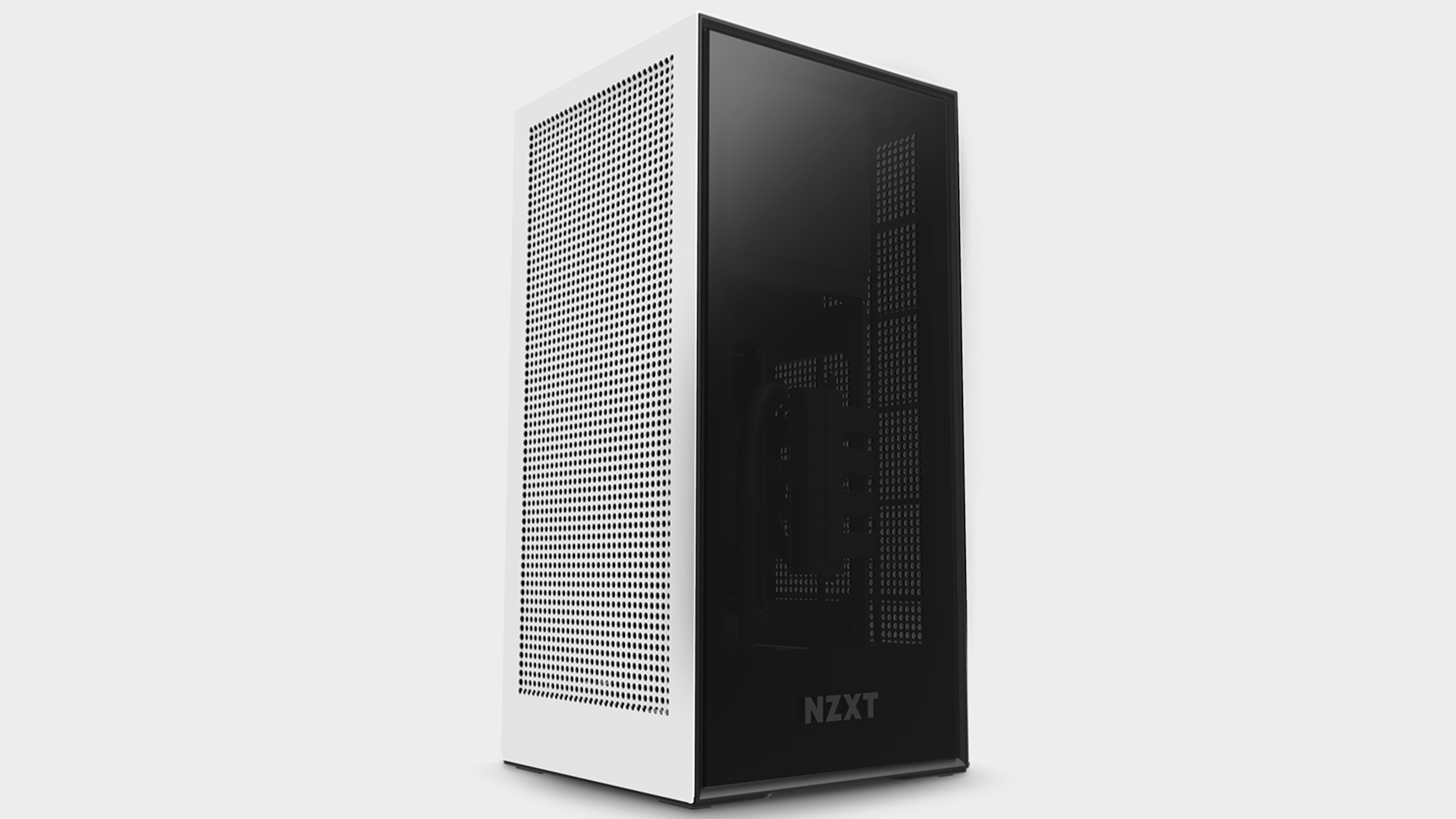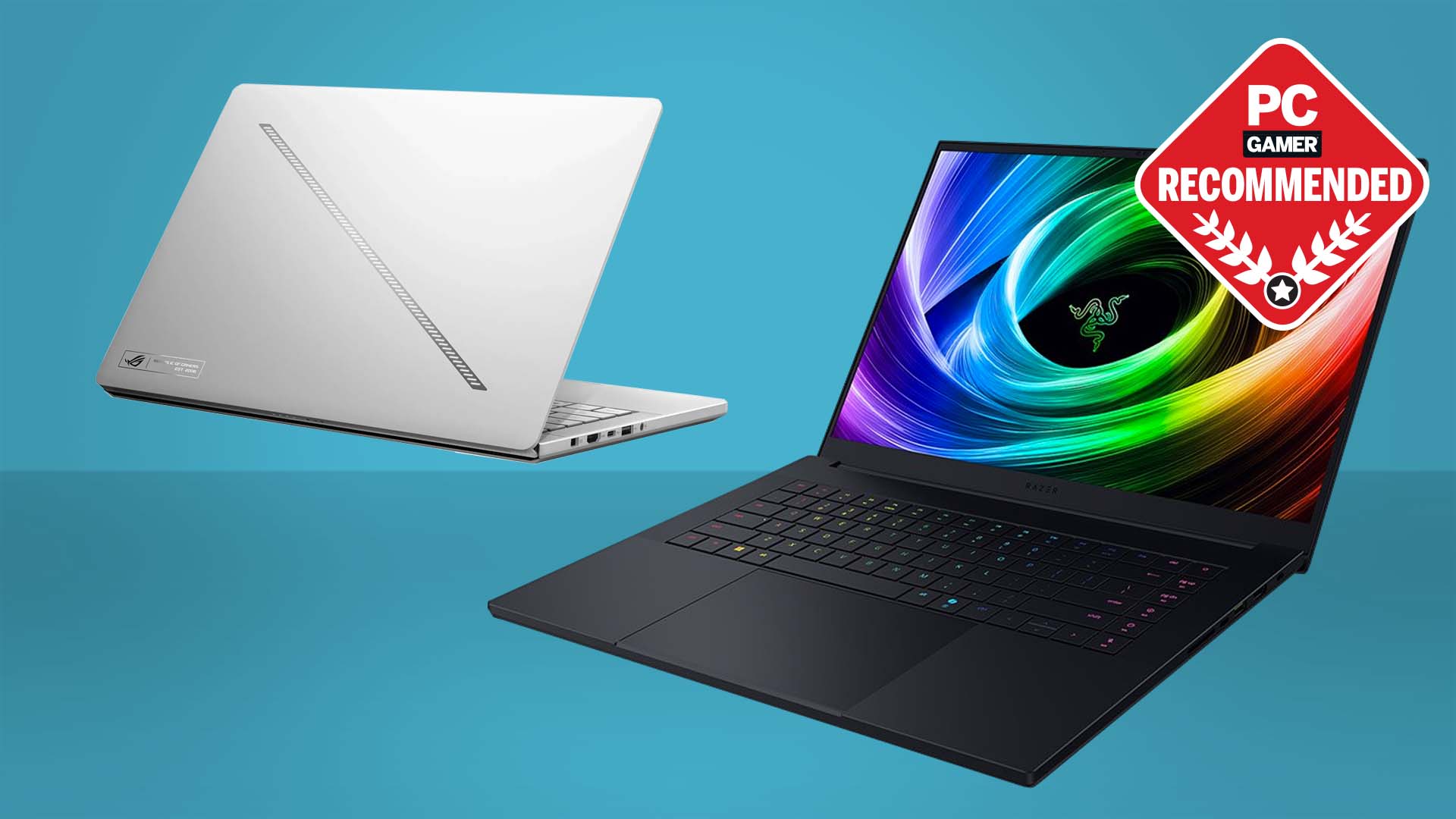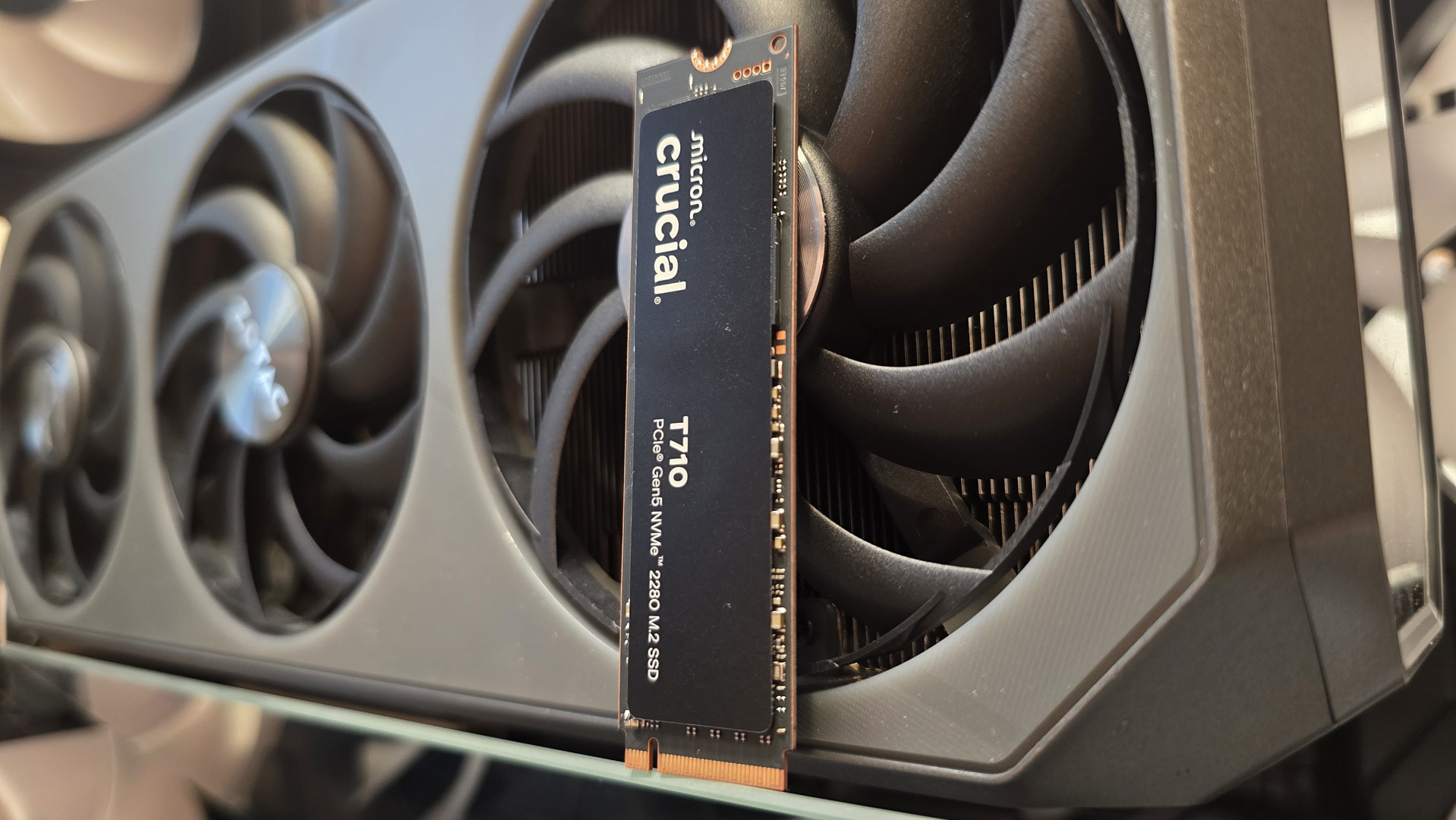Our Verdict
Forget the Xbox Series X looks, the H1 is a smart mini-monolith that acts as the perfect starter kit for a serious small form factor gaming PC.
For
- Bundled PSU and liquid cooler
- Excellent build quality
- Full size GPU support
Against
- Minimal outputs
PC Gamer's got your back
Update 2/2/21: NZXT has removed the H1 chassis from sale due to concerns about the safety of the PCIe riser cable and its potential fire risk. The initial fix was a set of nylon screws which should halt conductivity between any metal screw and the 12v power, but this was a stop-gap measure at best. A whole new PCIe Gen3 riser assembly is set to be shipped out to users, expected to happen in March, and will be fitted to the chassis before it is allowed back to retail.
NZXT toll-free at 888-965-5520 from 8 a.m. to 6 p.m. PT Monday through Friday, by email at h1support@nzxt.com, or online at https://info.nzxt.com/h1-recall/ or www.nzxt.com and click on “Contact” then “Customer Support” for more information.
The NZXT H1 PC case is way more than just the lookalike Xbox Series X chassis it's been somewhat unfairly pegged as. It's not just a case, this is a mini-ITX gaming PC starter kit, and it's genuinely great. So much thought has gone into the design, and so smart is the set of vital small form factor extras it comes with, that to simply claim it's riffing off Microsoft's next-gen console design would be supremely unfair.
Dimensions 187mm x 387.7mm x 187.6mm
Weight 6.53kg
Motherboard support Mini-ITX
I/O 1x USB 3.2 Gen2 Type-C, 1x USB 3.2 Gen1 Type-A, 1x 4 pole audio jack
PSU 650W SFX-L 80Plus modular
Cooling 140mm AIO liquid cooler
Expansion slots 2
Drive bays 2x 2.5-inch
Price $350 | £300
And probably inaccurate. Sure the H1 was announced after the Series X was unveiled, but as fast as NZXT's engineering team might be I'd be impressed if it could design, manufacture, and release a whole new chassis that quickly. Especially one as intelligently crafted as this. And, while the overall cuboid tower design does evoke visions of Xbox future, it's certainly a lot bigger than the new Microsoft machine.
That doesn't mean it's big, and the orientation of the chassis means the NZXT H1 is far taller than it is wide, still giving it a very small form factor mini-ITX footprint. One of the reasons it's been able to restrict the spread is because there are certain things it doesn't have to worry about accommodating. There's no need for it to cater to third-party CPU coolers, or give you easy access to install your own PSU, because both come pre-installed with the H1.
That's the main reason for the seemingly sky-high price tag of the case, and what makes it such a great starting point for any mini gaming PC build. At $350 (£300) it sure costs a pretty penny, but the PSU and all-in-one liquid chip-chiller would come with close to a $200 bill on their own. The rest is all R&D.
That cooler is shaped to fit snugly inside the H1 and the radiator hinged so it can flip up to allow easy access to the motherboard and CPU bracket. And at 140mm it's got a decent level of cooler prowess too. In any small form factor gaming build thermals are an issue, and the H1 has to be able to shift a lot of heat from its compact core.
The smart chassis design doesn't come to an end with the fitted extras, it all starts with the toolless access the case offers, both from its exterior and when dropping components into H1 too.
Keep up to date with the most important stories and the best deals, as picked by the PC Gamer team.
Though smart chassis design doesn't necessarily equate to smart packaging.
I'm not a read-the-manual kinda guy. I like to just get stuck in, break things first, and ask questions later. But once out of the box I had zero idea how to actually open up NZXT's classically minimalist case, and having spent a long week trying to pry the H1 out of the grip of UK customs, I was understandably reticent to snap off a side panel to see how it fitted together.

Having the manual, which details exactly how to remove the side panels and wrap-over enclosure, stuck in a box inside the chassis itself just made things all kinds of tough. Thankfully there's a .pdf download of the manual on the product page, which gave me the confidence to pry off the toolless-fit tempered glass and vented rear panels, and then slide off the metallic sheath that fits on top of the steel frame.
The chassis open, and with the makings of a small form factor gaming PC build in my hands, the NZXT H1 becomes a joy. Every step of the build process makes sense, and makes it evident that including a PSU and cooler in the chassis was absolutely necessary. With any compact PC build cable management becomes more important than ever; in a standard hulking ATX case you can just jam cables behind the rear panel and forget about the mess of wiring you've hidden back there. With a small form factor machine, however, every inch is precious and can make a tangible difference to the thermal performance of your rig.

With the PSU tucked into the top of the H1, behind another toolless compartment cover, the vital power cabling is just the right length for the case and doesn't need to be folded back on itself to fit. The cooler too, with its chunky 140mm radiator, coolant tubing, and necessary wiring, is all fitted around the steel frame and designed to fold away once a compatible motherboard and processor is installed.
The way all of that is put together, with a bespoke PCIe 3.0 x16 riser cable fitted into place, means there's a specific compartment for your graphics card that's almost the height of the case itself. That means practically any 2.5 slot graphics card you could name will comfortably fit inside the H1.
The all-AMD build I fitted into this superlative chassis comprises one of the best mini-ITX Ryzen motherboards on the market, the ASRock X570 Phantom Gaming-ITX/TB3, which made things super easy. The H1's AIO cooler comes pre-installed with the Intel fitting though it does ship with alternative AMD brackets in the package, but thankfully the ASRock X570 actually uses Intel's LGA 1151 bracket for reasons of board spacing. Dropping a Ryzen 5 3600X in there, an Intel NVMe SSD, and a chunk of Crucial memory, meant I was almost ready to roll.
The final piece of the puzzle is one of my favourite GPUs of all time, the Radeon RX 5700. It fits perfectly in the graphics card compartment, and altogether means this svelte build is one powerful little gaming PC.

And it all went in surprisingly quickly and booted first time. Now that last is down to pure luck and nothing to do with the H1 PC case, but those pre-installed components certainly made for an incredibly straightforward, speedy build. In fact the only things that held me up was gaining that initial access, wasting time trying to find where I'd left the backplate for the ASRock X570 (for reference, it's permanently attached to the board…), and figuring out where the front panel connectors were on the board and where the wiring was from the chassis. It doesn't make me feel good to have to admit I'd already plugged both in correctly, though I thought it was actually a USB 2.0 header and connector.
My only real concern with the H1 itself is that in its quest for minimalism NZXT isn't giving much away in terms of connectivity. The top panel simply has a power button, a combined 3.5mm audio jack (with mic and headphone splitter in the box), one Type A USB port and one Type C. That's it. With mini-ITX boards necessarily light on connections from their own I/O panel they rely on the chassis to make up the shortfall, but the H1 will likely require you dig out that old USB hub from your bottom drawer.
But with everything inside, and the panelling back in place, this mini black monolith makes for a wonderful small form factor build. I'm hugely impressed with the build quality of the H1 as well as the insight NZXT has made in creating this simple starting point for putting together your own mini gaming PC. It takes the hassle out of some of the toughest SFF component choices, and means you just have to focus on the parts that really matter to your gaming performance.
Forget the Xbox Series X looks, the H1 is a smart mini-monolith that acts as the perfect starter kit for a serious small form factor gaming PC.

Dave has been gaming since the days of Zaxxon and Lady Bug on the Colecovision, and code books for the Commodore Vic 20 (Death Race 2000!). He built his first gaming PC at the tender age of 16, and finally finished bug-fixing the Cyrix-based system around a year later. When he dropped it out of the window. He first started writing for Official PlayStation Magazine and Xbox World many decades ago, then moved onto PC Format full-time, then PC Gamer, TechRadar, and T3 among others. Now he's back, writing about the nightmarish graphics card market, CPUs with more cores than sense, gaming laptops hotter than the sun, and SSDs more capacious than a Cybertruck.


